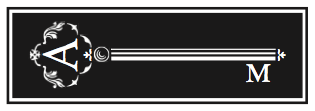Guidelines for Submitting Text and Images
Text files should be submitted in Microsoft Word (or similar word-processing software). Although word-processing software such as MS Word continues to add more features to simulate publishing layout software, these features should be resisted and it should be borne in mind that the typescript should not be ‘designed,’ since only the raw data (keystrokes) are needed. In fact, the more a typescript is styled, the more time and effort is required to undo the work when accomplishing the actual formatting and typesetting for the finished book. Headings may be left aligned at the left and need not be centered, styled, or set in a special font. Images should not be embedded in the document, but rather ‘[Fig. 00 near here]’ may be placed in square brackets as a guide to page make-up. In order to speed along copy-editing and typesetting, final submission of the typescript should be double, or triple spaced. Notes should be the same size as the text and placed at the end of the essay or in a separate document, rather than embedded in the text as footnotes; in the printed volume, notes will be set as footnotes, but it greatly aids copy-editing and typesetting to not treat them as footnotes in the typescript.
For purposes of publication, only high-quality, professionally realized images should be submitted. What is needed is either (1) the continuous tone of a glossy black-and-white or color photograph, or (2) a film transparency (4 x 5 inch format), or (3) a digital file. Because of their small size, photographic slides are less desirable, but may be used, lacking other media. Digital images should be in the tiff format (that is, in an uncompressed file) at 300 dpi, although high-resolution jpegs are also acceptable. If the image is a detail (and thus small in size) and is to be enlarged to double or more its digital size, 600 dpi would be needed. Scans or photos of images in printed books should only be used as a last resort, since the halftone screen employed in printing must be mechanically blurred in order to avoid a moiré pattern when re-screening, which, of course, degrades the image. Images from photocopiers or desktop printers—which simulate continuous-tone images with a low-grade approximation of a diffuse spray of ink—are not acceptable images for publication. Digital images should be left uncropped, and work on color, tonality, contrast, etc., done in Photoshop or other photo-editing software, should be foregone and left to our and the printer’s professionals.
